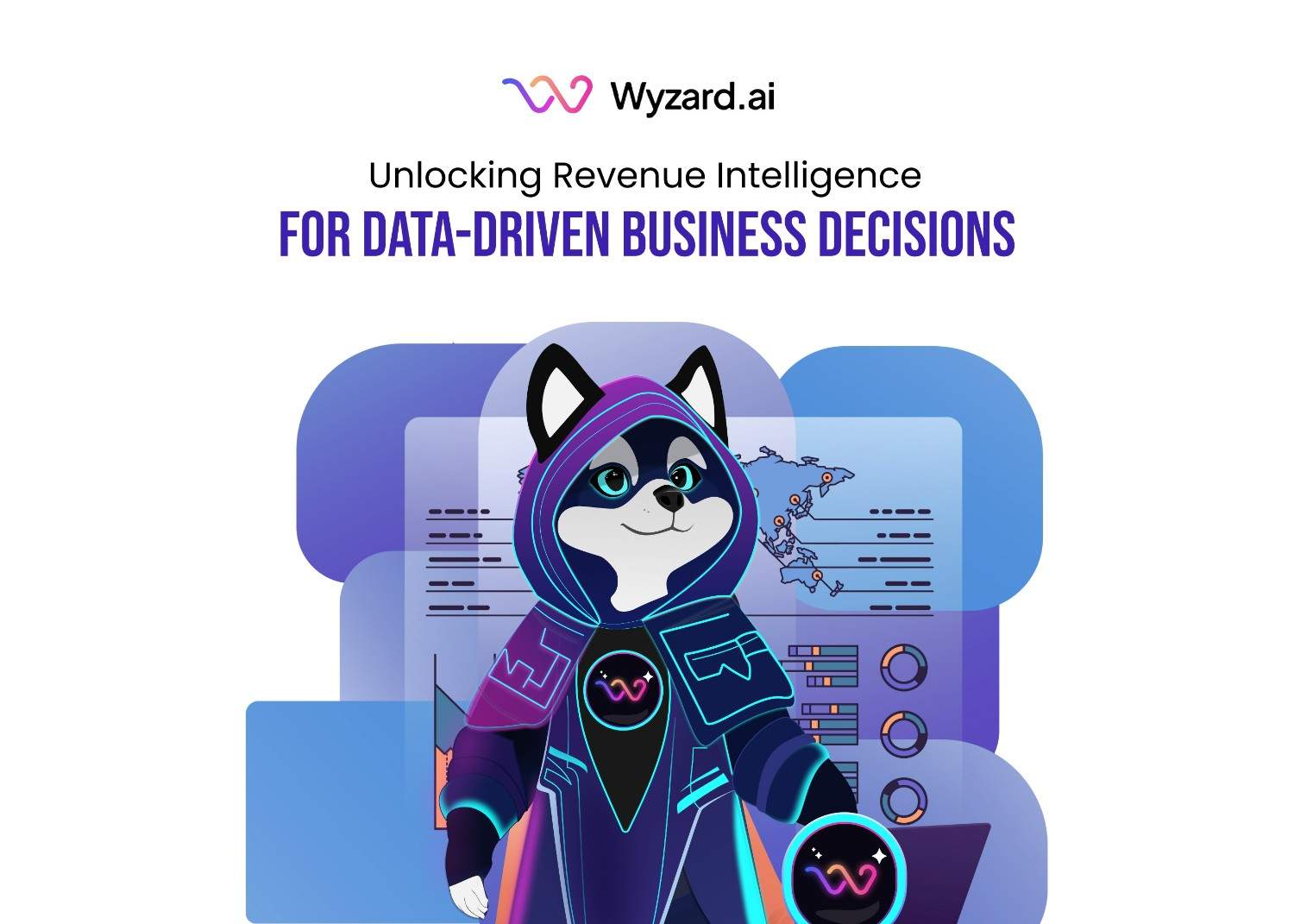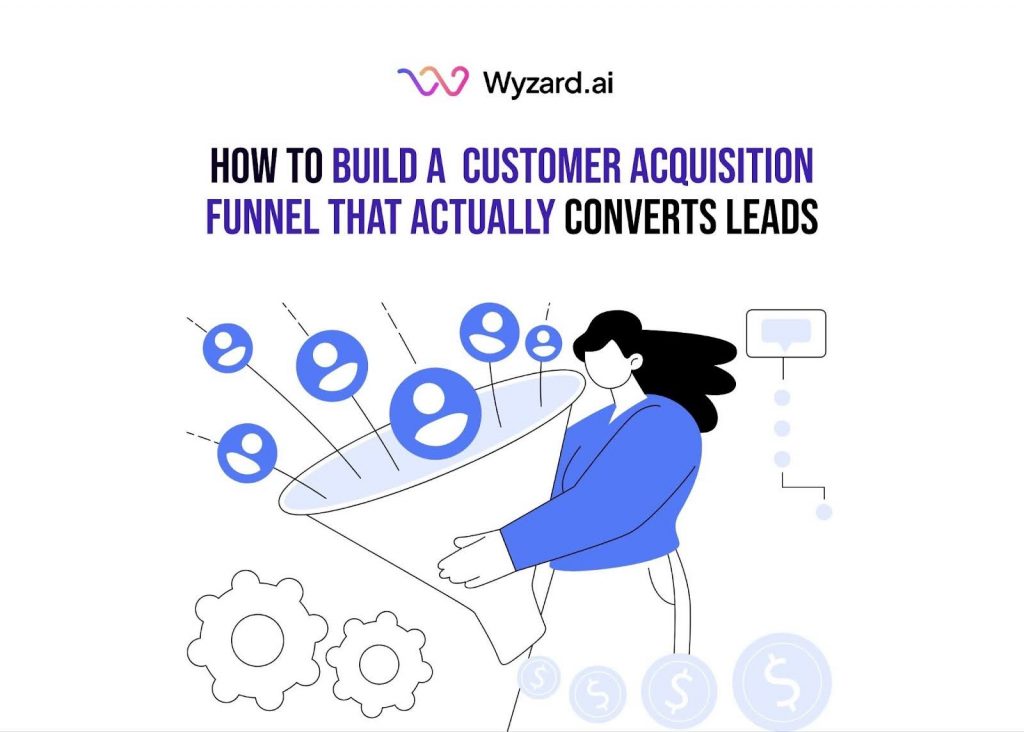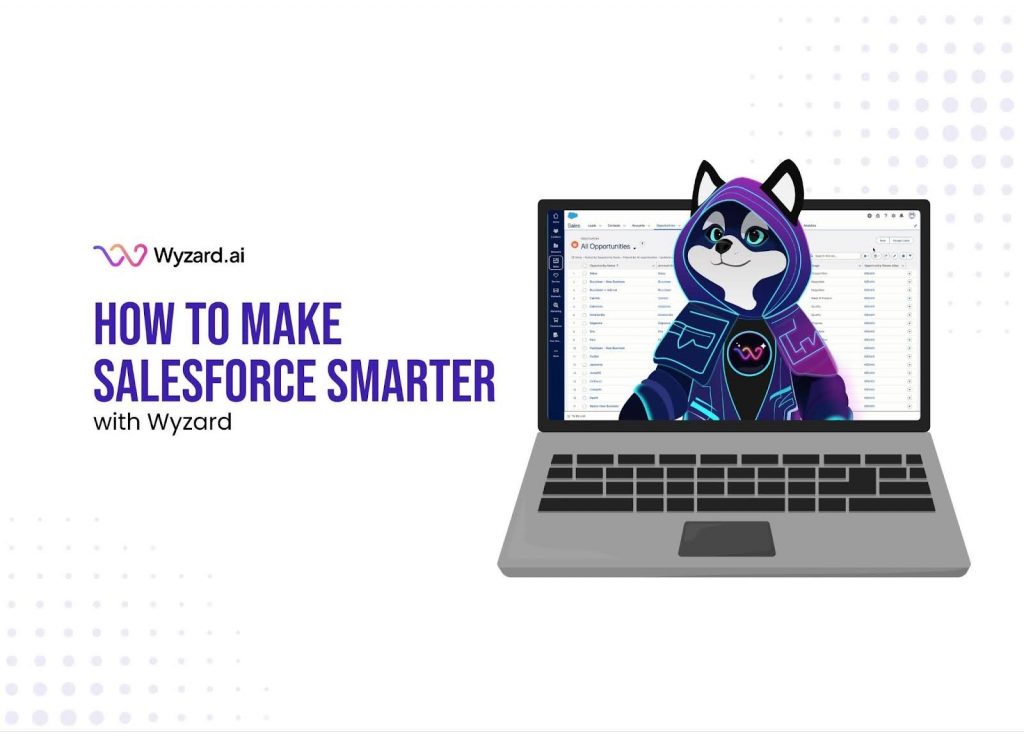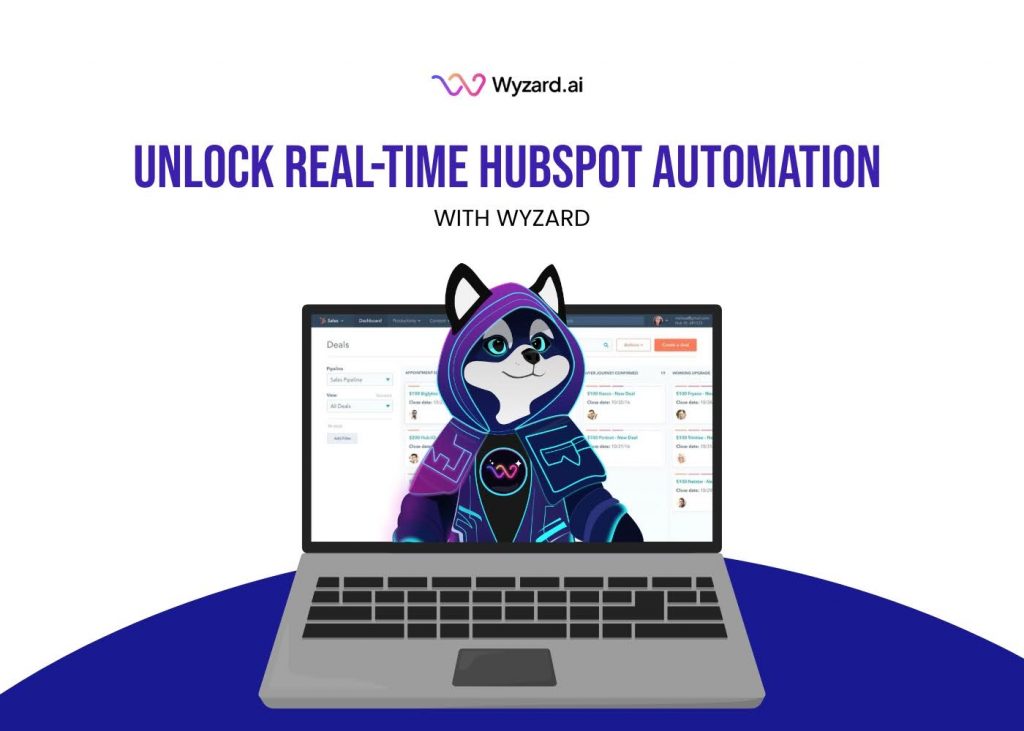You're generating traffic. Leads are visiting your website. But conversions? They're barely moving the needle. The problem isn't your ...
Unlocking Revenue Intelligence for Data-Driven Business Decisions


Subscribe Now
You’re staring at your pipeline dashboard, and the numbers don’t add up. Deals that looked promising last week suddenly went cold. Your forecast is off by 20%, and you’re not sure why. Your marketing team swears they’re generating quality leads, but sales says the handoffs are all wrong.
Sound familiar? You’re not alone. Most B2B SaaS teams are flying blind, not because they lack data, but because their buyer signals are scattered across a dozen tools with no one connecting the dots.
That’s the problem revenue intelligence solves. It’s not just another analytics dashboard. It’s the system that captures every buying signal in real time, connects your tools, and tells your team exactly what to do next, before the opportunity slips away.
What Is Revenue Intelligence and Why It Matters Now
Revenue intelligence is the practice of using AI and automation to collect, analyze, and act on customer data across your entire go-to-market motion. It stitches together signals from your website, CRM, email, chat, meetings, and product usage to give you a complete picture of buyer intent.
Here’s what makes it different from traditional sales analytics: it doesn’t just tell you what happened. It tells you what’s about to happen and what to do about it.
The core components of a revenue intelligence platform include:
- Automated data capture: No more manual logging. Every email, call, meeting, and website visit is tracked automatically
- Signal detection: AI identifies patterns that indicate buying intent, like multiple stakeholders engaging with your pricing page
- Workflow orchestration: When a high-intent signal fires, the platform triggers the right follow-up across your stack
- Unified analytics: One dashboard that shows pipeline health, rep performance, and conversion bottlenecks in real time
Wyzard.ai positions itself as “The Signal-to-Revenue AI” because it focuses on this exact flow: capturing buyer signals instantly and converting them into revenue by orchestrating actions across your tools and channels.
How Revenue Intelligence Platforms Transform Your GTM Motion
Let’s break down what actually changes when you implement a revenue intelligence solution.
Before revenue intelligence: Your SDR gets a demo request form fill. They check the CRM, see the company name, maybe glance at LinkedIn, and send a templated email. Three days later, they followed up with a call. By then, the prospect had already talked to two competitors.
With revenue intelligence: The moment that form submits, the platform knows this prospect visited your pricing page twice, downloaded a case study, and fits your ICP profile. It instantly routes the lead to the right rep, surfaces relevant talking points from similar closed deals, and triggers a personalized email sequence, all within 60 seconds.
The Three Pillars of an Effective Revenue Intelligence Tool
| Pillar | What It Does | Business Impact |
| Signal Capture | Tracks every buyer interaction across channels—web visits, email opens, call sentiment, product usage | Eliminates blind spots; ensures no buying moment is missed |
| Intelligent Orchestration | Connects tools and triggers automated workflows based on signal patterns | Reduces response time from days to minutes; improves conversion rates |
| Actionable Insights | Surfaces next-best actions for reps and forecasts pipeline movement with AI | Increases rep productivity by 30%+; improves forecast accuracy by 15-20% |
These three pillars work together to create what Gartner calls a “closed-loop revenue system”, where every signal feeds into action, and every action generates new signals that refine your motion.
Key Problems Revenue Intelligence Solves for GTM Teams
Most mid-market B2B SaaS companies face the same handful of problems. Revenue intelligence platforms directly address these pain points.
Problem 1: Lost buyer intent due to scattered signals
Your prospect engages with your brand across multiple touchpoints—website, email, LinkedIn, product demos, and support chats. But these signals live in separate systems. By the time someone manually pieces it together, the moment has passed.
Revenue intelligence solutions aggregate these signals in real time. When a prospect’s engagement score crosses a threshold, your team knows immediately and can act while intent is hot.
Problem 2: Manual lead qualification eats up rep time
Your sales team spends hours each week researching accounts, logging activities, and deciding who to prioritize. That’s time not spent selling.
Automated lead scoring and enrichment cut this work down to seconds. The platform tells reps which accounts are showing intent, what they care about, and how similar deals closed, so they can jump straight into conversations.
Problem 3: Delayed follow-ups kill conversion rates
Speed to lead is everything. But when handoffs require manual steps, routing in Salesforce, assigning in Outreach, updating in Slack, your response time balloons.
Revenue intelligence platforms orchestrate these handoffs automatically. When a high-value signal fires, the right rep gets notified, the relevant context is surfaced, and follow-up sequences launch without human intervention.
Problem 4: Pipeline forecasting is guesswork
Most forecast calls involve reps giving gut-feel updates on deal status. Sales leaders have no objective way to validate these projections until quarter-end reality hits.
AI-powered forecasting analyzes historical deal patterns, engagement velocity, and stakeholder involvement to predict outcomes with accuracy. You stop guessing and start planning with confidence.
Wyzard.ai solves these exact problems by connecting your tools, capturing signals live, and triggering automated but human-supervised follow-ups. The platform emphasizes turning every buying moment into a revenue opportunity, not through more manual work, but through intelligent orchestration.
Implementing Revenue Intelligence Without Scaling Headcount
This is the big question for growth-stage teams: how do we increase pipeline efficiency without hiring more people?
Revenue intelligence is the answer because it multiplies the output of the team you already have.
Automation That Amplifies Your Team
Lead routing: Instantly assign leads to the right rep based on territory, product fit, and current workload
Activity capture: Automatically log emails, calls, and meetings into your CRM, no data entry required
Sequence triggering: Launch personalized outreach based on behavioral signals, not manual list-building
Meeting prep: Surface relevant case studies, competitive intel, and recent engagement history before every call
Pipeline alerts: Notify reps when deals show risk signals—like stakeholder disengagement or stalled activity
Measuring ROI on Revenue Intelligence Solutions
You need to justify the investment. Here are the metrics that matter:
- Time saved per rep: Track hours spent on manual data entry and research before and after implementation
- Response time: Measure average time from signal to follow-up
- Conversion rates: Compare lead-to-opportunity and opportunity-to-close rates
- Forecast accuracy: Calculate the variance between projected and actual revenue
- Pipeline velocity: Track how quickly deals move through stages
Most teams see payback within 6-9 months. The combination of faster cycles, higher win rates, and improved rep productivity more than covers the platform cost.
Choosing the Right Revenue Intelligence Platform for Your Stack
Not all revenue intelligence tools are created equal. Here’s what to prioritize when evaluating options.
Deep CRM integration: The platform should sync bidirectionally with Salesforce, HubSpot, or your CRM of choice, capturing data automatically and pushing insights back where your team works
Multi-channel signal capture: Look for coverage across web, email, chat, product usage, and third-party intent data
Workflow orchestration: The platform should trigger actions across your entire stack, not just within its own interface
AI-powered insights: Predictive scoring, churn risk detection, and next-best-action recommendations should be built-in, not bolted-on
Ease of adoption: If reps need extensive training, adoption will fail. The best platforms surface insights where reps already work
Wyzard.ai checks these boxes by focusing on signal-to-revenue orchestration. It connects your existing tools, captures buyer intent in real time, and automates follow-ups, all without requiring your team to learn a new workflow.
Practical Steps to Get Started with Revenue Intelligence
You don’t need a six-month implementation. Here’s how to launch in phases.
Phase 1: Audit your current signal sources
Map out where buyer intent signals live today—web analytics, CRM, email platform, product usage, support tickets. Identify gaps where signals aren’t being captured or acted on.
Phase 2: Define your high-intent signals
Not all engagement is equal. Decide which behaviors indicate strong buying intent: pricing page visits, demo requests, multiple stakeholders engaging, competitive search terms, etc.
Phase 3: Connect your core tools
Start with your CRM, marketing automation platform, and sales engagement tool. Add other sources incrementally.
Phase 4: Build automated workflows
Create simple if-then rules: “If prospect visits pricing page twice in 24 hours, alert account owner and trigger follow-up sequence.” Start with 3-5 workflows, then expand.
Phase 5: Train your team on insights
Show reps how to interpret engagement scores, prioritize accounts, and use AI-generated talking points. Make it part of your weekly pipeline review.
Phase 6: Measure and iterate
Track the metrics mentioned earlier. Refine your signal definitions and workflows based on what drives actual pipeline movement.
This phased approach lets you prove value quickly, then scale as you see results.
Common Mistakes to Avoid When Adopting Revenue Intelligence
Even the best platform won’t deliver if you make these errors.
Mistake 1: Treating it as a reporting tool
Revenue intelligence isn’t just dashboards. It’s an operational system. If your team only looks at reports but doesn’t change behavior, you’ve wasted the investment.
Mistake 2: Ignoring data quality
Garbage in, garbage out. If your CRM is full of duplicates, outdated contacts, and incomplete records, AI can’t help. Clean your data first.
Mistake 3: Over-automating too soon
Start with human-supervised automation. Let reps review AI recommendations before fully automated actions. Build trust, then increase autonomy.
Mistake 4: Skipping change management
Reps resist new tools if they don’t understand the benefit. Run workshops, share early wins, and get champions to advocate internally.
Mistake 5: Forgetting to align marketing and sales
Revenue intelligence only works if both teams use the same definitions, signals, and handoff processes. Misalignment creates friction that automation can’t fix.
Avoid these pitfalls, and you’ll see ROI much faster.
The Future of Revenue Intelligence: What’s Coming Next
This space is evolving fast. Here’s what to expect in the next 12-24 months.
AI agents, not just tools: Instead of humans interpreting AI recommendations, autonomous agents will handle entire workflows from lead enrichment to meeting scheduling to follow-up emails.
Real-time buyer collaboration: Platforms will enable shared deal rooms where buyers and sellers collaborate on implementation plans, ROI calculators, and contract reviews, all tracked as engagement signals.
Predictive churn and expansion: AI will flag at-risk customers before they churn and identify expansion opportunities based on product usage patterns and engagement velocity.
Voice-of-customer integration: Conversation intelligence from sales calls, support tickets, and product feedback will feed into revenue models, giving teams a complete view of customer sentiment.
Cross-company benchmarking: Platforms will anonymize data across customers to provide competitive intelligence, showing you how your metrics stack up against peers.
The companies that adopt revenue intelligence now will be years ahead when these capabilities go mainstream.
FAQs
Sales analytics tells you what happened, closed deals, pipeline coverage, and activity metrics. Revenue intelligence tells you what’s happening now and what to do next. It combines real-time signal capture, AI-powered predictions, and workflow automation to drive action, not just reporting.
Most platforms can connect to your CRM and begin capturing signals within 1-2 weeks. Full implementation, including workflow automation, team training, and optimization, typically takes 1-3 months. Phased rollouts let you see value quickly while building toward full adoption.
Small teams benefit even more. With limited headcount, every rep interaction matters. Revenue intelligence multiplies each rep’s output by automating manual work, prioritizing high-intent accounts, and providing context that would otherwise require dedicated research time.
No, it enhances it. Revenue intelligence platforms integrate with your existing CRM to automatically capture data, enrich records, and surface insights. Your CRM remains the system of record, and revenue intelligence makes that data actionable in real time.
Other blogs
The latest industry news, interviews, technologies, and resources.
How to Make Salesforce Smarter with Wyzard.ai
Your CRM is packed with contacts, but how many buying signals are you missing right now? A prospect just ...

Unlock Real-Time HubSpot Automation with Wyzard.ai
Your HubSpot portal holds valuable data about every lead, deal, and customer interaction. But if you're waiting hours, or ...

 We’ve secured funding to power Signal-to-Revenue AI to GTM teams globally. →
We’ve secured funding to power Signal-to-Revenue AI to GTM teams globally. →


